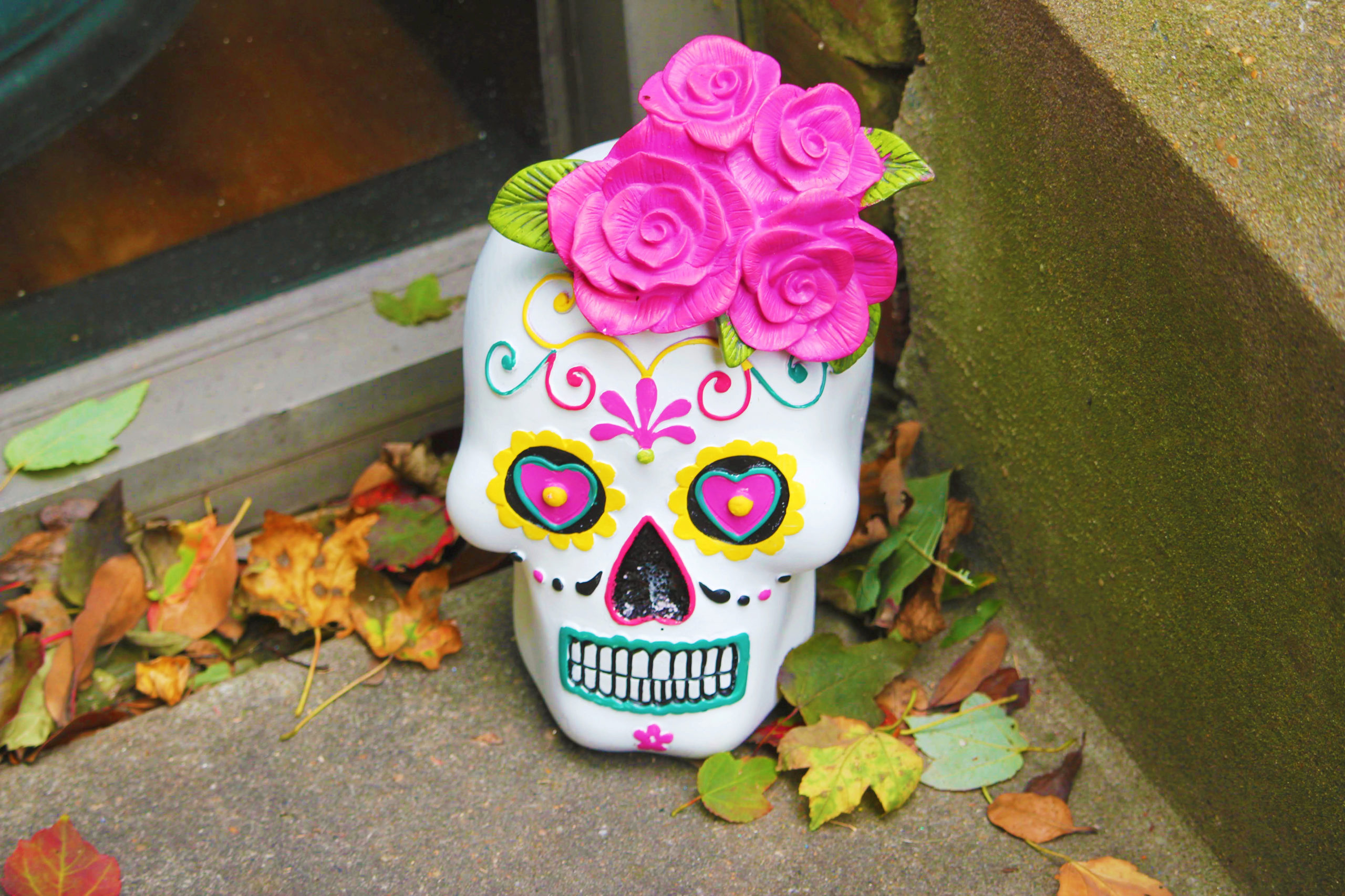
Day of the Dead, or Día De Los Muertos, is celebrated every November 1st through November 2nd. It is an honorable holiday as its purpose is to remember and reunite the living with deceased loved ones.
This two-day reunion dates back to Mexican beliefs from thousands of years ago in more modern times. The Aztecs and other native people of Mexico looked at death as a new stage of life rather than an ending.
The history of Day of the Dead is rooted in ancient times when people believed that after death, the person would go to a place called Chicunamictlán, or the Land of the Dead.
After making it through nine challenging levels over several years, the person would then make it to another place called Mictlán, the final resting place.
Throughout this sacred journey, the deceased’s family would provide food, water and other necessities to make it through this voyage. This thoughtful gifts and offerings arrangement is known as ofrendas and is symbolic to the deceased and their family.
This history built the foundation of Day of the Dead as relatives create and place food and other symbolic items to welcome their family back home.
Although many people mistake Day of the Dead for a Mexican interpretation of Halloween due to the elaborate costumes, elaborate celebrations and face painting. However, it has little connection to Halloween despite its many similarities.
Overall, those that celebrate the holiday believe it to be a celebration that closes the gap between the natural world and the spirit world. The Day of the Dead is not just limited to being celebrated in Mexico as it is celebrated in many different countries worldwide.
During The Day of the Dead, the souls of the dead come back to the living world with their families and celebrate with food, music, dancing and drinking.
The souls of the deceased are honored all night in addition to more offerings at their graves.
Junior Kelly Reyes remembers hearing stories about her grandmother taking part in this celebration growing up in Mexico City, Mexico. Despite not celebrating this tradition today, she understands how much it means to her family and culture.
“Día De Los Muertos allows families to honor their family members that have passed on to the other side,” Reyes said. “It is a day dedicated to our loved ones by making an altar of their favorite things such as alcohol, their favorite snacks, or their favorite objects.”
With this holiday lasting two days, each day honors two types of people who have passed, children and adults.
Día de Los Angelitos, Day of the Little Angels, begins at midnight on November 1st and is meant to honor and celebrate the life of these young souls. Their families keep and remember them by placing some of their favorite toys, snacks and pictures on the ofrenda.
“A lot of people don’t know that the holiday is celebrated for two days straight rather than just one day,” Reyes said. “They also have a signature pastry called “Pan de Muerto,” and it’s a pastry that is a piece of bread covered with cinnamon and sugar with four bones designs on top.”
The second part of the holiday is a celebration of the deceased adults, and it begins at midnight on November 2nd. This second day is a more adult-themed celebration, and families decorate altars with alcohol, pastries, flowers and other Mexican beverages.
Families spend nearly the whole day at the cemetery celebrating and partying with one another and the spirits of their loved ones.
As families continue to celebrate throughout the day, noon is when the grand finale of Día De Los Muertos takes place. People get dressed up, paint their faces like skulls and assemble to parade in the streets.
These skulls are called “Calaveras” and are a massive symbol for this holiday. They come in the form of decorations, sugar candy and face painting. After the people decorate the skulls, family members place them on the ofrenda of the deceased.
People do not celebrate Dia de los Muertos as much in more modern times. Reyes recalls seeing her elders participate in the holiday more than she has ever seen anyone her age.
“The older generations tend to celebrate it to its fullest extent because they got to experience the authentic details that go into the holiday while a lot of my generation doesn’t get the full experience because most parents tend to adapt more towards American customs once they come to the United States,” Reyes said. “This results in the tradition getting watered down until it eventually gets overlooked unless the family makes an effort to keep the tradition alive. “
With other generations trying to keep the tradition alive, some films today are also doing their part by displaying this memorable side of Hispanic culture.
The 2017 film “Coco” paid homage to this Mexican tradition as the movie stars a young boy who travels to the Land of the Dead in search of his idol, a famous musician, Ernesto de la Cruz. During his journey, he meets some of his ancestors.
“Although the movie Coco is not real, it was still a [lovely] and heartfelt depiction of the holiday,” said Reyes. “It introduces the traditions that are held and how important every little detail is to the traditions that are held those days.”
As the traditions of this holiday continue to change over time, someone will always celebrate Día De Los Muertos somewhere. No matter what country people celebrate it in, it is still a time to remember and celebrate the life of those who have passed on from this side and transitioned into another.
